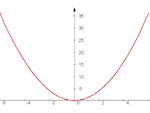 Money is a tough enough subject on its own. Compound interest seems difficult to wrap your head around, and nearly impossible to calculate without specialized tools.
Money is a tough enough subject on its own. Compound interest seems difficult to wrap your head around, and nearly impossible to calculate without specialized tools.
In this post, however, you'll not only wrap your head around compound interest, but learn some amazing ways to estimate answers quickly in your head!
Compound interest is really all about the time value of money. OK, granted, that sounds like I just switched one buzzword for another. Perhaps having German Nande explain the time value of money in his TED-Ed video will help:
Perhaps figuring out that 10% added to $10,000 is $11,000, but wouldn't it be difficult to work out how long it would take $10,000 to turn into $110,000? Our first tool will begin to make calculations like this easy.
• The Rule of 72: This is one of the most well-known rules in finance. BetterExplained.com has an excellent article on the Rule of 72. In short, if you divide 72 by the interest rate in question, you'll get the number of years it will take your money to double at that interest rate.
For example, for the 10% example in the video, you'd work out 72 ÷ 10 = 7.2, which means it would take about 7.2 years to double your money at 10%. How long would it take at 6%? You work out 72 ÷ 6 = 12, so it would take 12 years to double your money at 6% interest.
To figure out the amount of time it would take to accumulate $110,000 at 10% compound interest, we could think about it in the following manner. In 7.2 years, the $10,000 would double to $20,000. In another 7.2 years (14.4 years total), the $20,000 would become $40,000. Another 7.2 years (21.6 years) would bring $80,000, and a final 7.2 years would take it to $160,000, so we can say that getting to $110,000 would take somewhere between 22 and 29 years.
That's accurate as far as it goes, but can we do better?
• The Rule of 114 and 144: As pointed out over in allfinancialmatters.com, there are similar rules for finding out how long it takes your money to triple and quadruple. For tripling, divide 114 by the interest rate, and for quadrupling, you divide 144 by the interest rate.
Let's see if we can't work out the $110,000 with these new tools. If we could have the original $10,000 triple, then quadruple (or vice-versa) at 10% interest, that would be 12 times our original amount. So, to determine the tripling time, we work out 114 ÷ 10 = 11.4 years. From there, the quadrupling time would be 144 ÷ 10 = 14.4 years. 11.4 + 14.4 = 25.8, or about 26 years. That's the same amount of time in the video!
That's not bad for a mental estimate. There's plenty that can and can't be done with these rules. For example, investopedia points out that using the long term inflation rate of 3%, you can compare prices from years ago to today's prices. At 3%, inflation should double prices every 24 years (72 ÷ 3 = 24), so prices should quadruple every 48 years, and so on.
The caveats explained in MindYourDecisions.com's post on the Rule of 72 should be understood. The rule of 72 doesn't apply when you're getting a variable return (such as stocks and bonds), the interest rate in question is too extreme, or when additional money is regularly added.
That last point is especially interesting. Just how do you calculate interest when regular amounts are included as you go?
• The Rule of 6: Fortunately, MindYourDecisions.com has an answer for that, as well. In that posts example, the author supposed that you add $100/month to an account at 5% interest for 1 year. The calculation shortcut simply involves multiplying the regular deposit amount by the interest rate and the number 6.
The answer given by this estimate is 6 × $100 × 0.05 = 600 × 0.05 = 30. $30 then is the estimate, which is pretty good compared to the actual calculated total of $32.26. If you want to see the accuracy of this formula for yourself, you can play with the numbers involved at this Wolfram|Alpha link. Simply set d to the regular deposit amount (d=100 in this example), and p to the percentage rate (5% is given by p=0.05); Wolfram|Alpha will then return two variables, u, which is the exact amount of dollars in interest you can expect, and v, which is the mental estimate.
Perhaps this rule should be called the rule of half, since you can apply this to any amount of months simply by halving the total number of months involved. How much, for example, could you expect in interest by putting in $150 per month at 4% interest per year, for 5 years (60 months)? We multiply 30 months (half of 60) × $150 per months × 0.04 = $4,500 * 0.04 = $180 in interest. The actual amount, as calculated here, is $181.82, using an additional variable, m, to represent the number of months in question (m=60 for 60 months).
Practice these financial tips, and be ready to astound your friends and family with your financial wizardry!

 Have you ever been stumped by a math puzzle or problem?
Have you ever been stumped by a math puzzle or problem?


 Even when you think you understand a concept, even one as simple as basic multiplication, you can come across a different perspective that makes you take a closer look.
Even when you think you understand a concept, even one as simple as basic multiplication, you can come across a different perspective that makes you take a closer look.



